

Click the blue text above to follow us



1 Overview
Existing energy systems are often planned and operated separately, leading to low energy utilization and high pollution. Nowadays, more research focuses on how to optimize the collaboration of independent energy supply systems to reduce environmental pollution while increasing energy utilization and economic performance. The large-scale integration of various energy sources often results in energy systems that cannot balance economic viability and environmental protection, leading to insufficient optimization capabilities. Therefore, optimizing integrated energy systems while considering both economic efficiency and environmental protection becomes a pressing issue. Pei Wei et al. utilized linear models to optimally configure the capacity of power, natural gas, and thermal systems to improve energy utilization efficiency. References have considered carbon emissions and the absorption of renewable energy, proposing a new hybrid flow calculation method to ensure the economically stable operation of constructed combined heat and power microgrids.


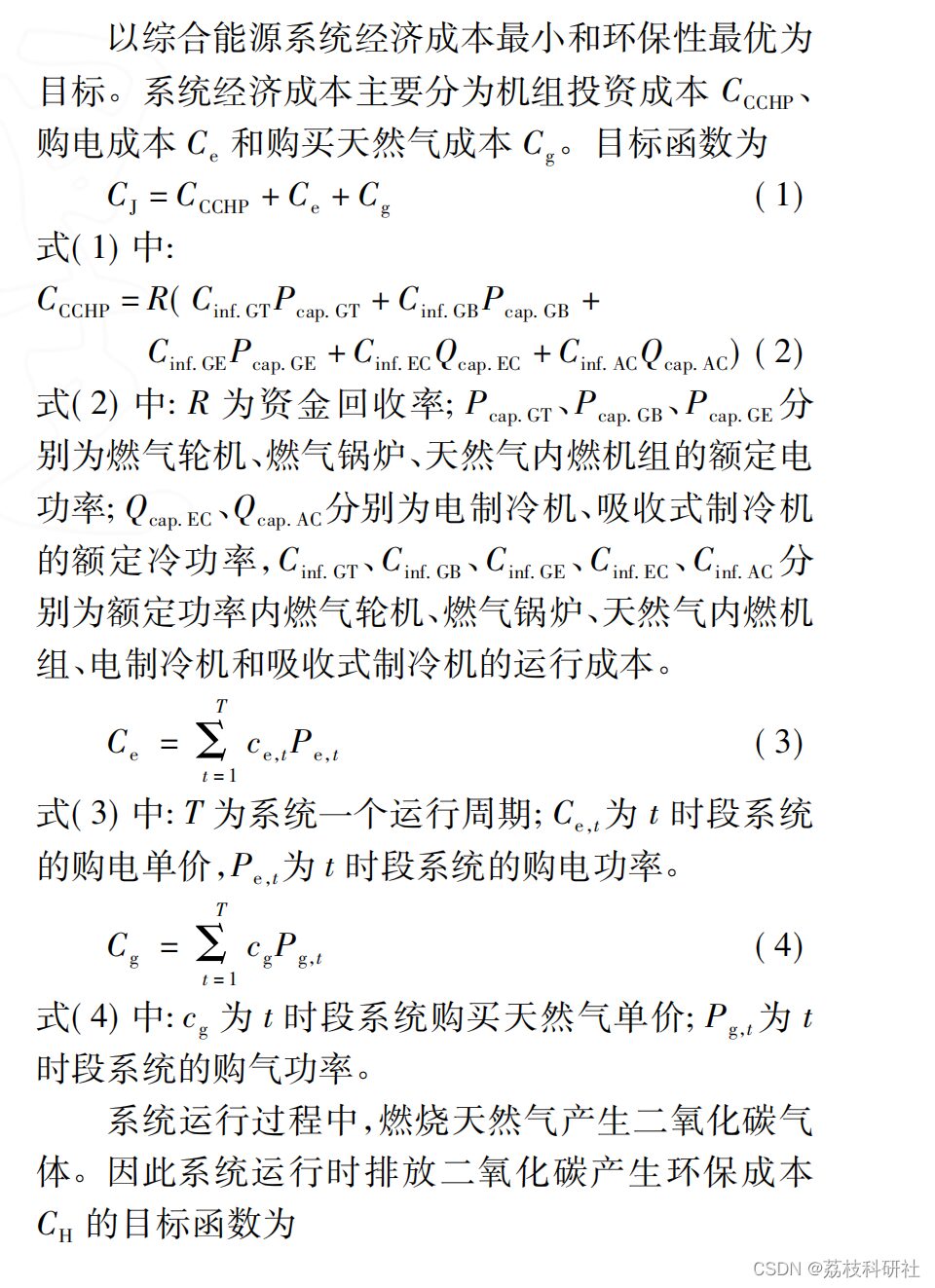
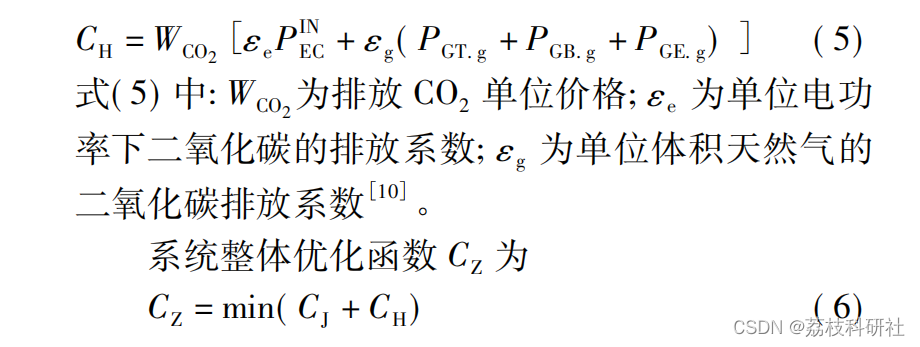

The combined cooling, heating, and power (CCHP) integrated energy system is the most commonly used regional integrated energy system, with its network architecture shown in Figure 1. The CCHP system can utilize natural gas internal combustion engines and gas turbines to generate electricity from natural gas combustion, and can also use the heat generated by these devices and gas boilers for heating and cooling, thereby integrating power supply, heating, cooling, and gas supply, enhancing the coupling of various functional systems and improving energy utilization efficiency.

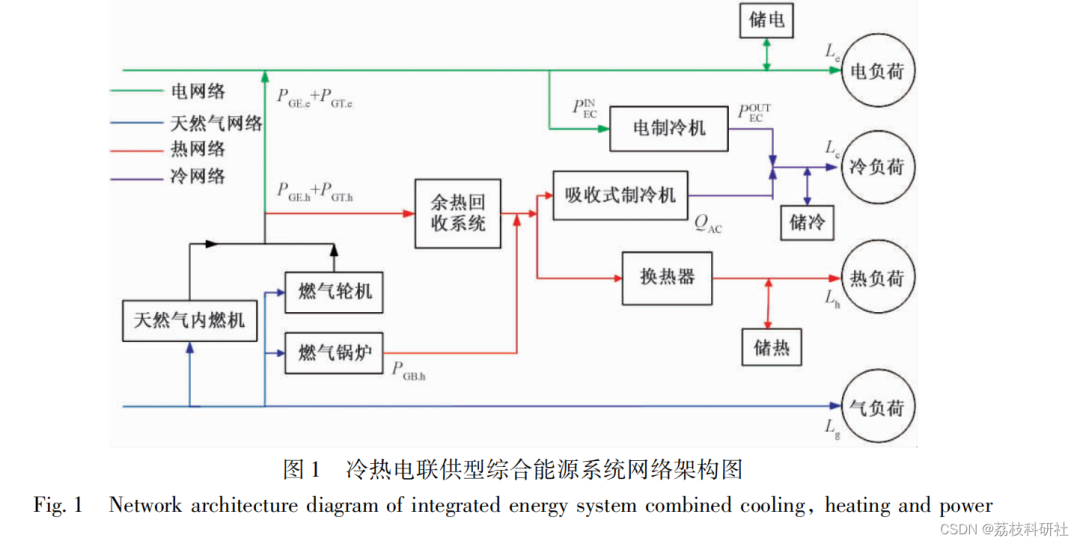


2 Operating Results
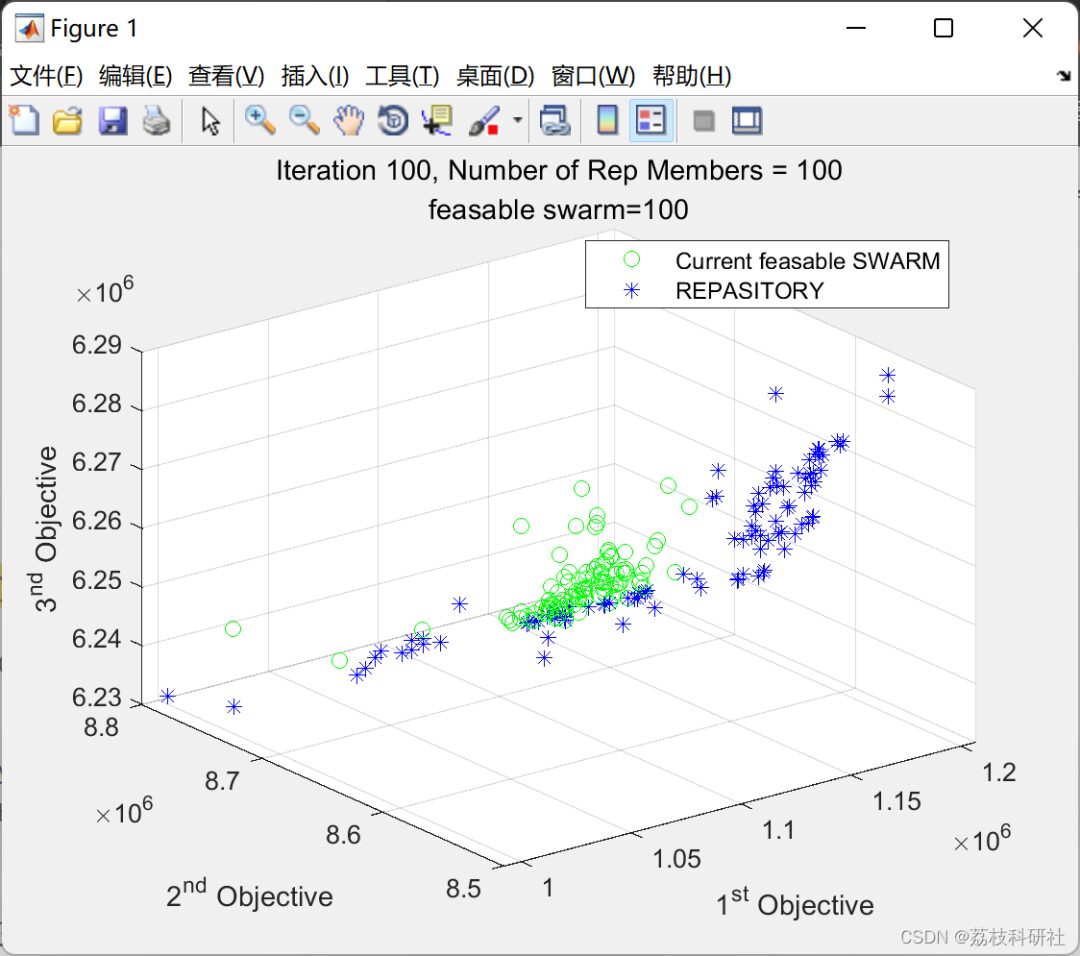
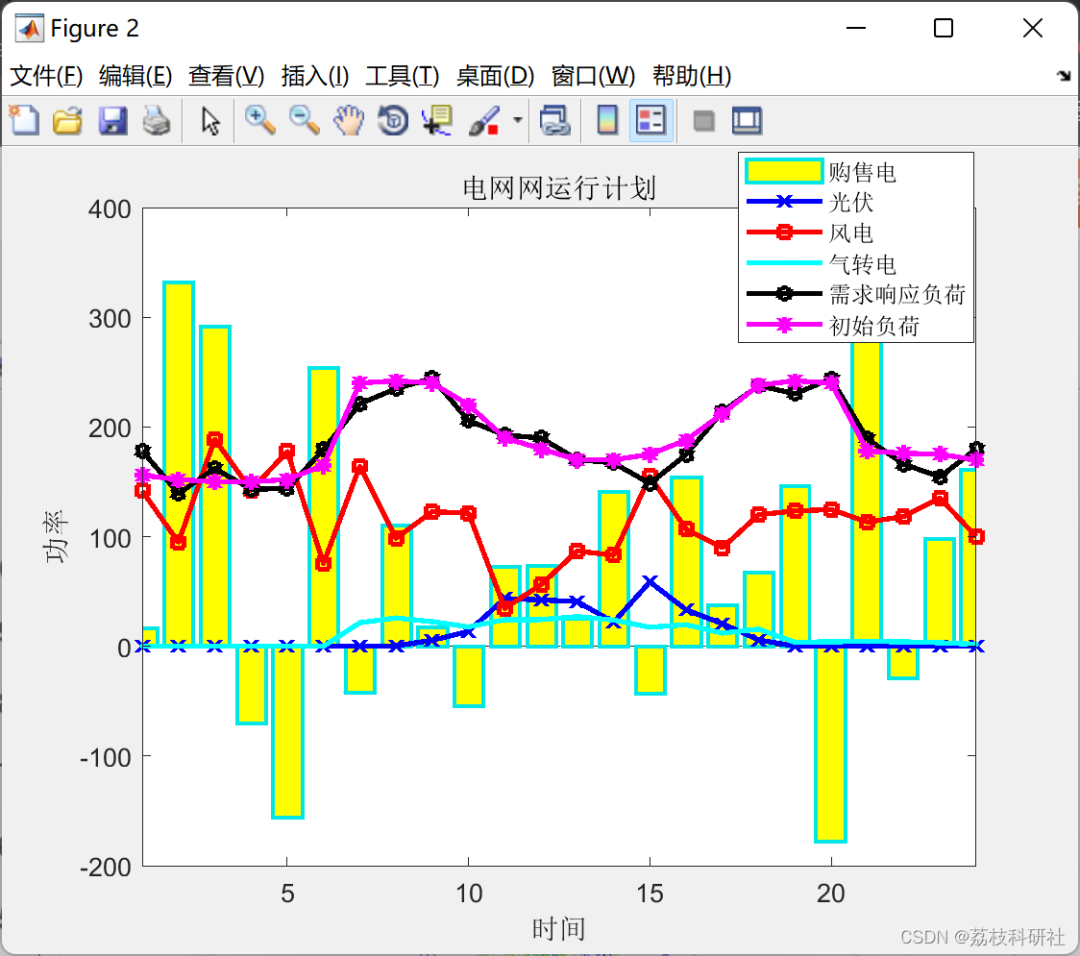
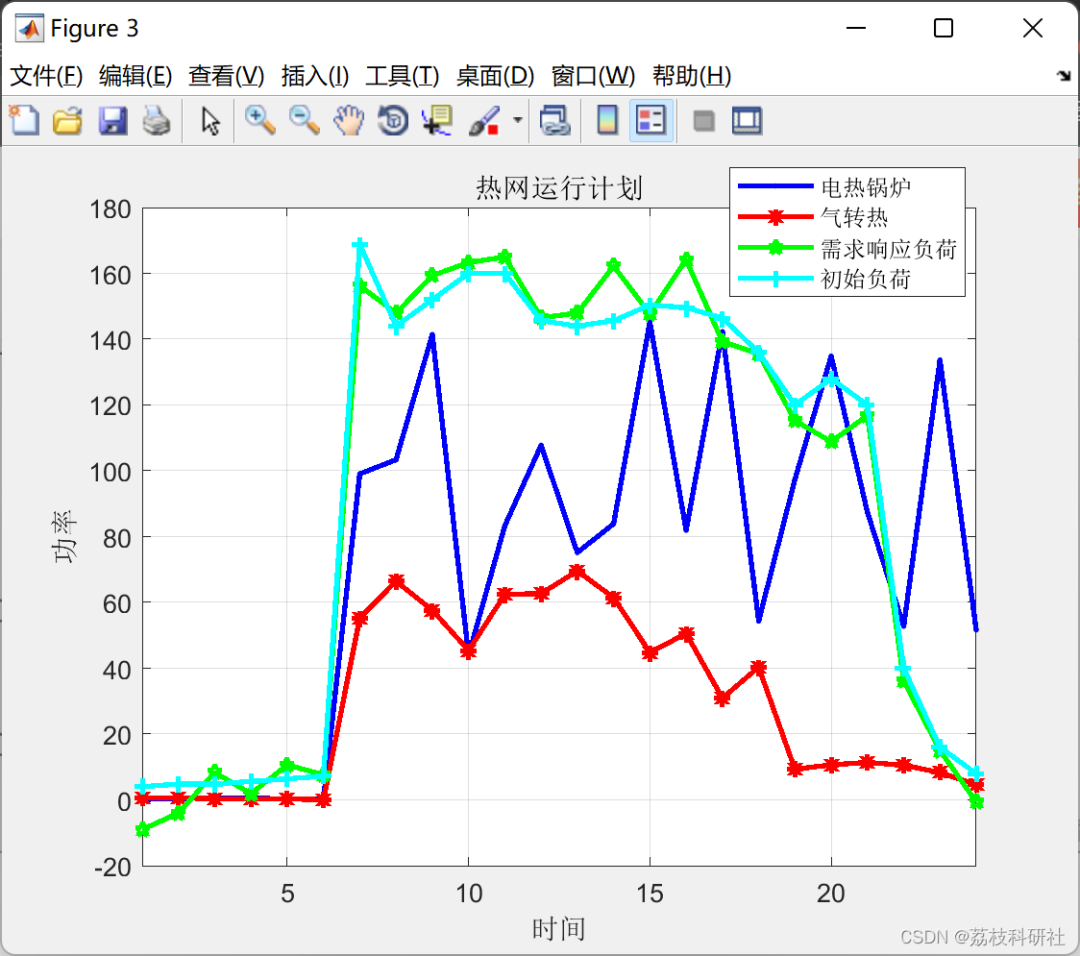
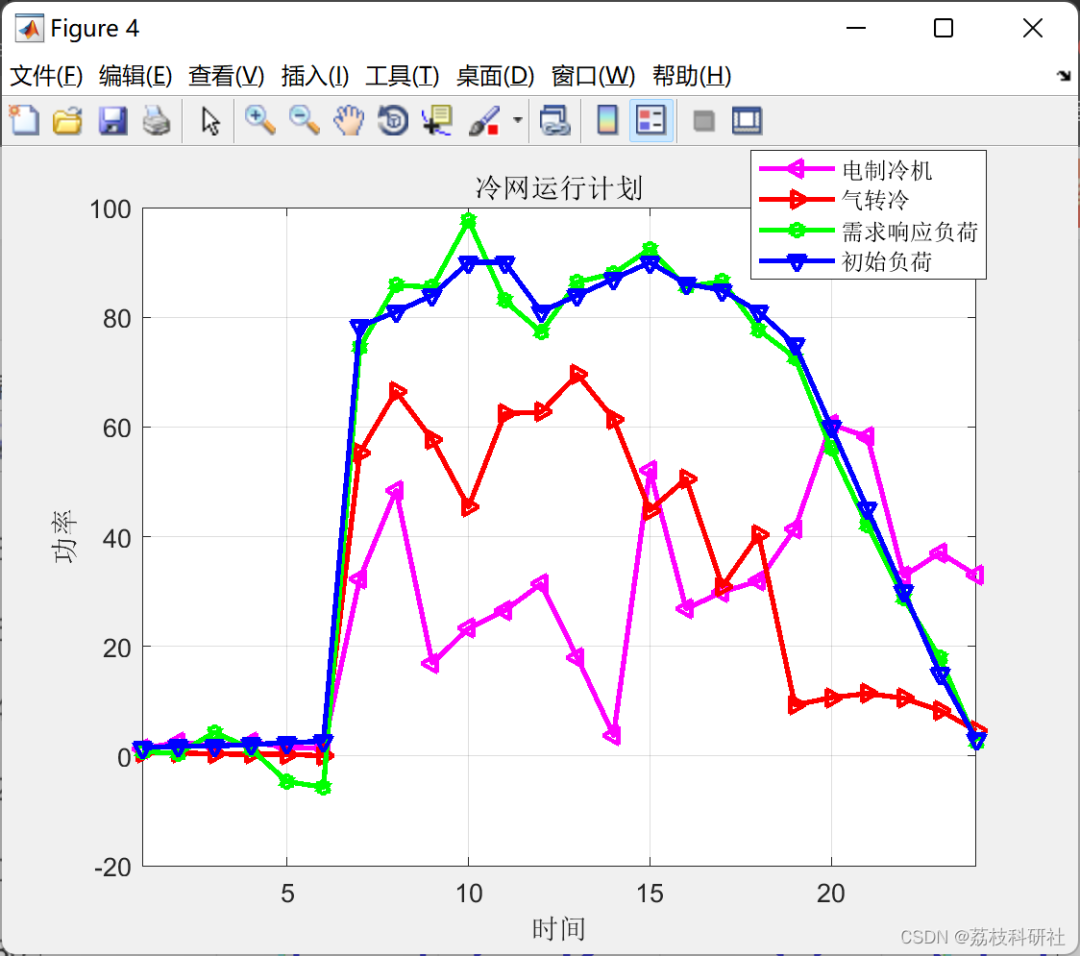
% Part of the code:
function result=fitness(x,k)
global PV;
global WT;
global P_load;
global R_load;
global L_load;
global G_price;
global C_grid_sell;
% Selling electricity price
gas_price=0.175; % Gas price
nGT_e=0.29; % Gas turbine conversion efficiency
nGT_h=0.61;
nGB_h=0.85; % Thermal boiler efficiency
nGE_e=0.35; % Natural gas internal combustion engine conversion efficiency
nGE_h=0.7;
COP_EC=5; % Electric chiller efficiency
COP_AC=1.2; % Absorption chiller efficiency
n_hs=0.9; % Waste heat recovery system efficiency
n_hr=0.85; % Heat exchanger efficiency
for j=1:120
if j<25
PGT(j)=x(j);
elseif j>24&&j<49
PGB(j-24)=x(j);
elseif j>48&&j<73
PGE(j-48)=x(j);
elseif j>72&&j<97
PEC(j-72)=x(j);
elseif j>96
Grid(j-96)=x(j);
end
end
PGTe=PGT*nGT_e; % Gas turbine conversion
PGTh=PGT*nGT_h;
PGBh=PGB*nGB_h; % Thermal boiler conversion
PGEe=PGE*nGE_e; % Natural gas internal combustion engine conversion
PGEh=PGE*nGE_h;
PE= PV'+WT'+ Grid+PGTe+PGEe-PEC; % Total output power from the grid
P_hs=(PGEh+PGTh)*n_hs+PGBh; % Heat from waste heat recovery system
P_hr=P_hs*n_hr; % Increased heat through the heat exchanger
% Total heat
Q_AC=P_hs*COP_AC; % Cooling from absorption chiller
Q_EC=PEC*COP_EC; % Cooling from electric chiller
Q_all=Q_AC+Q_EC; % Total cooling
sum_delt_P=0;
sum_delt_R=0;
sum_delt_L=0;
delt_P=(P_load-PE);
delt_R=(R_load-P_hr);
delt_L=(L_load-Q_all);
sum_delt_P=sum(delt_P);
sum_delt_R=sum(delt_R);
sum_delt_L=sum(delt_L);
BT1=delt_P;
BT2=delt_R;
BT3=delt_L;
SOC=0;
dsoc=0;
for i=1:24
SOC=SOC+BT1(i);
if SOC>1000
dsoc=dsoc+(SOC-1000);
end
if SOC<-1000
dsoc=dsoc+abs((SOC+1000));
end
end
r1=0;
r2=0;
r3=0;
if(sum_delt_P<2000)
r1=1.0;
elelseif(sum_delt_P>2000&∑_delt_P<=3000)
r1=5;
elelseif(sum_delt_P>3000&∑_delt_P<=4000)
r1=10;
elelseif(sum_delt_P>4000&∑_delt_P<=6000)
r1=100;
else
r1=1000;
end
if(sum_delt_R<1000)
r2=1.0;
elelseif(sum_delt_R>1000&∑_delt_R<=2000)
r2=5;
elelseif(sum_delt_R>2000&∑_delt_R<=3000)
r2=10;
elelseif(sum_delt_R>3000&∑_delt_R<=4000)
r2=20;
else
r2=1000;
end
if(sum_delt_L<3000)
r3=1.0;
elelseif(sum_delt_L>3000&∑_delt_L<=4000)
r3=5;
elelseif(sum_delt_L>4000&∑_delt_L<=8000)
r3=10;
elelseif(sum_delt_L>8000&∑_delt_L<=10000)
r3=50;
else
r3=2000;
end
C_all=0;
for i=1:24
C_PEC(i)= G_price(i)*PEC(i); % Cost of electricity for electric chiller
if Grid(i)>0
C_grid(i)= G_price(i)*Grid(i); % Cost of purchasing electricity from the grid
else
C_grid(i)= C_grid_sell*Grid(i);% Revenue from selling electricity to the grid
end
end
C_all=gas_price*(sum( PGT)+sum( PGB)+sum( PGE))+sum( C_grid)+sum( C_PEC)+0.8*sum(abs(BT1)+abs(BT2)+abs(BT3));
% result=C_all+r1*sum_delt_P+r2*sum_delt_R+r3*sum_delt_L;
result=C_all+10*dsoc;

3 References
Some theoretical sources are from the internet. If there is any infringement, please contact us for removal.

[1] Tao Jing, Xu Wu, Li Yilin, Huo Yiwen, Zhang Enmu. Optimization of Combined Cooling, Heating, and Power Integrated Energy Systems Based on Multi-Objective Algorithms. Science and Technology and Engineering, 2019, 19(33): 200-205.



4 MATLAB Code + Data